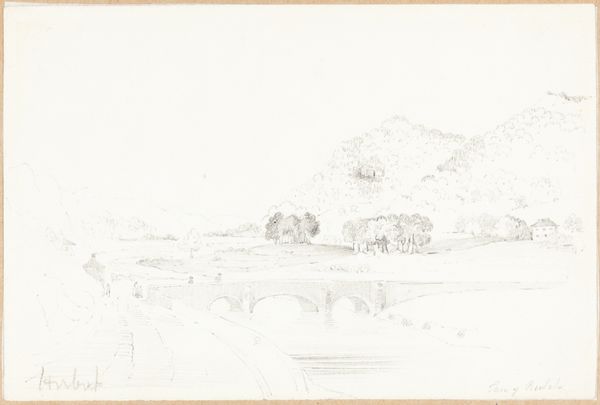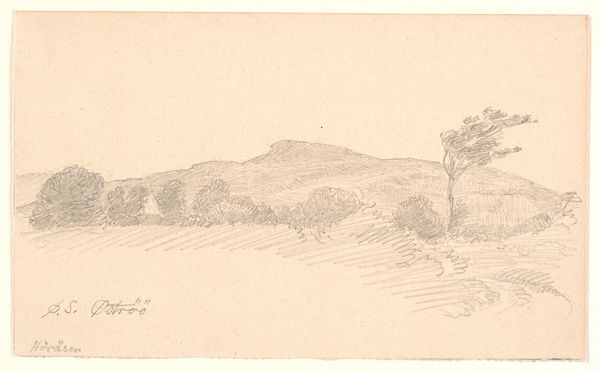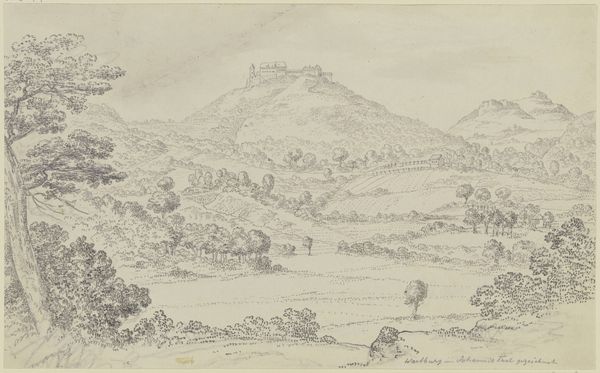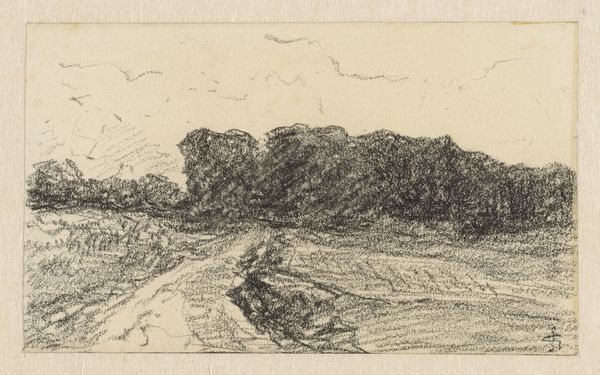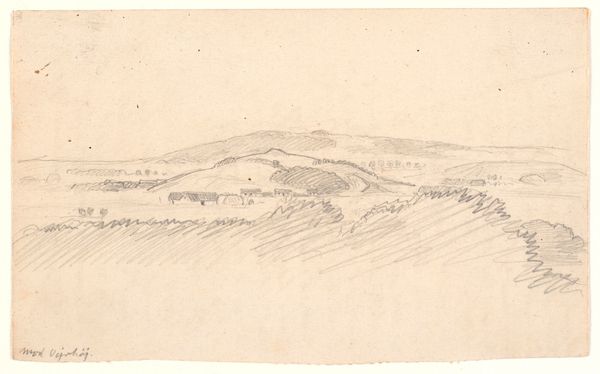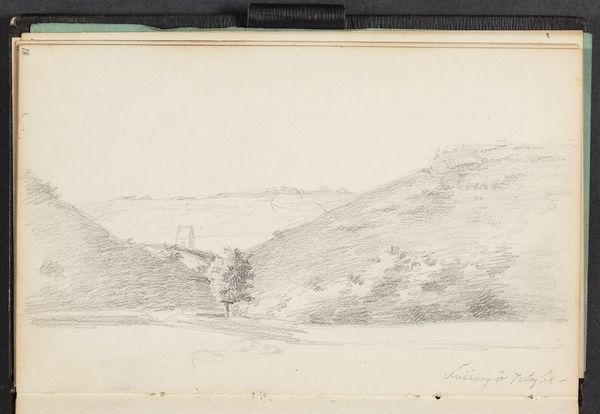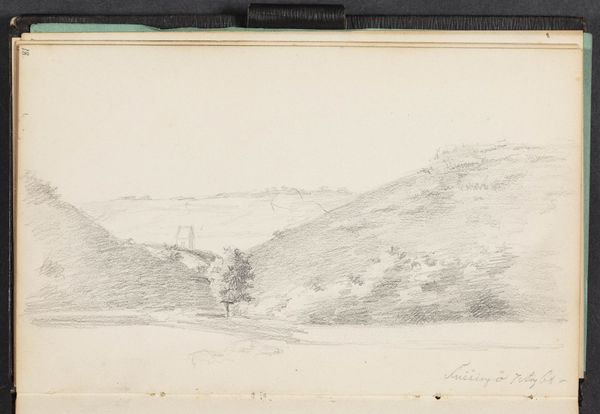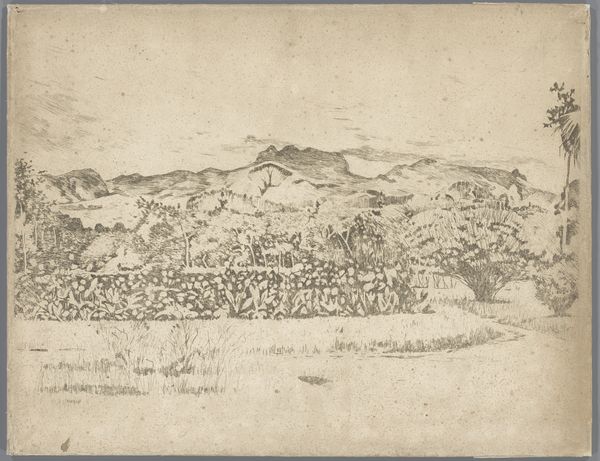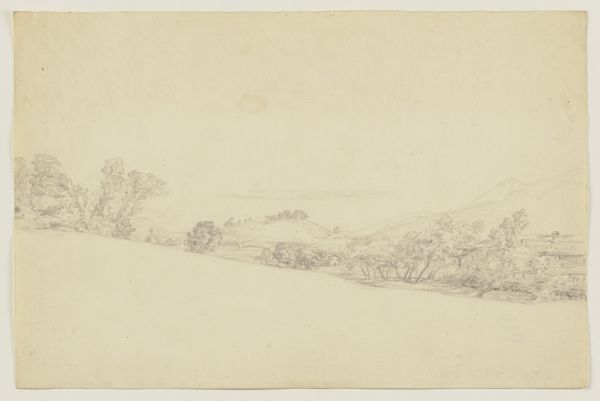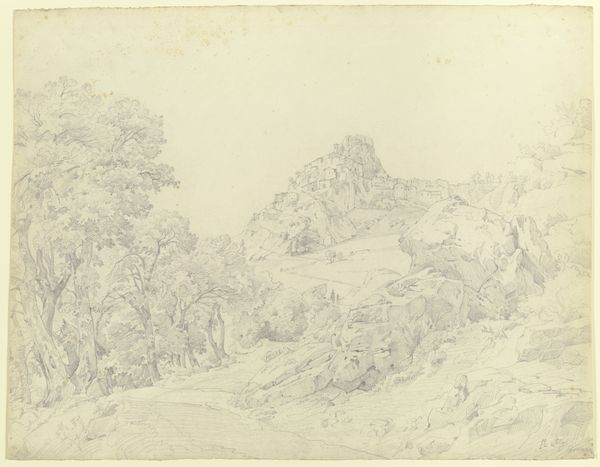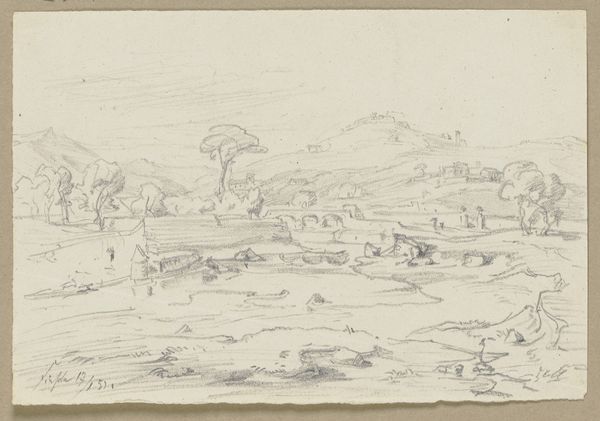
Dimensions: 189 × 267 mm
Copyright: Public Domain
Editor: So, this is "Walking Through the Fields" by John Linnell, made in 1868 using pencil and chalk on paper. It's currently housed here at the Art Institute of Chicago. There's something so simple, yet captivating, about its lines. The hill dominates the composition, yet the delicate trees in the foreground catch my eye. What do you see in this piece? Curator: The formal elements present a fascinating tension. Notice how Linnell uses the stark contrast between the heavily worked hillside and the almost blank foreground. This creates a spatial compression, forcing our gaze upward. The textural variations, achieved through different applications of pencil and chalk, become the primary narrative. Do you observe how the directional lines contribute to a sense of movement? Editor: Yes, I do. The lines on the hill seem to pull you upwards. Almost like walking through it. The trees below, with their softer, rounder forms, kind of ground you, providing a visual rest. I'm intrigued by the large, blank area at the bottom of the paper; is it intentional? Curator: Indeed. That negative space is crucial. It's not merely a void, but a visual element that emphasizes the density of the landscape above. It compels the eye to focus on the meticulously rendered details of the hill. Note the suggestive marks and implied forms—less a representational landscape, and more a study of form, texture, and spatial relationships. This transcends the merely picturesque, wouldn't you agree? Editor: I can definitely see that now. Initially, I perceived the blank space as unfinished, but I understand that it’s part of the composition, emphasizing form. Thanks for sharing your expertise! Curator: My pleasure. I am glad I was able to bring attention to how carefully chosen forms can give new perspectives to how we interpret landscape and art.
Comments
No comments
Be the first to comment and join the conversation on the ultimate creative platform.
